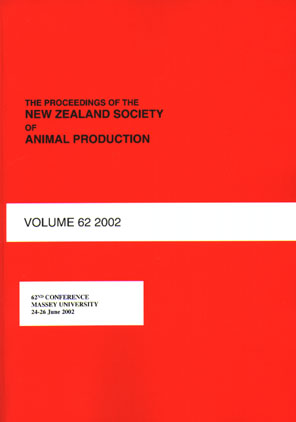Abstract
Jersey cows in six mixed breed dairy herds produced up to $0.36 per cow per day less than their Friesian herd mates, during the 1991/92 dairy season. Jersey cows received lower Production Indexes (PI's) than their Friesian and Crossbred herd mates. It is not clear whether this lower production of Jersey's is a result of competition for feed between breed groups or is a genuine genetic difference between breeds. Some of the difference can be explained by the lower protein to fat ratio of Jersey milk compared to Friesian milk. Jersey cows are more efficient producers of milk income per kg liveweight than Friesians. If the breed composition of a herd is changing towards Friesians or Crossbred, then stocking rate as measured by liveweight per ha will also increase. Where stocking rate is already high this will inevitably reduce pasture intake of individual cows unless pasture supply is increased. Farmers would like to know if the Jersey component of their herds can be managed to improve production relative to Friesian or whether changes in breed composition of their herds are necessary to achieve optimum production and herd size in relation to feed supply and other farm resources.
Proceedings of the New Zealand Society of Animal Production, Volume 53, , 1-6, 1993
| Download Full PDF | BibTEX Citation | Endnote Citation | Search the Proceedings |

This work is licensed under a Creative Commons Attribution-NonCommercial-NoDerivatives 4.0 International License.

